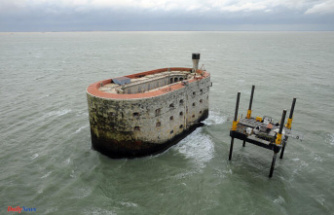Felipe VI in the National Park of Ordesa: "it Is the responsibility of all to care for this patrimony of the humanity"
Medina Azahara already shines as World Heritage of Humanity
1902. That is the number of all the sites that have been declared world Heritage of Humanity since 1972 by the United Nations Organization for Education, Science and Culture (UNESCO). To some it will seem like a shit, and others a figure low by all the amazing thing that can be seen around the world. Of the 1900, only a few are easily recognizable as a world Heritage site. May come to be counted on the fingers of one hand. Among the most well-known found in Venice, the Acropolis of Athens or Ibiza. Different backgrounds but all have two characteristics in common: Cultural World Heritage (WHS) and its location in coastal areas. Two coincidences that not only moves the interest of the tourists on the beach.
Many of the places declared Cultural World Heritage (WHS) are part of the mediterranean region that is threatened by sea level rise, as demonstrated in a study published in the scientific journal Nature Communications. These investigations can be considered exclusive since, as is explained in them, the only studies on the sea level rise focus on assessments at the local scale of different impacts of climate change at UNESCO.
The World Cultural Heritage, threatenedUntil they reached Lena Reimann and his team of researchers at the Center for Geography of the University of Kiel. In 2016, these scholars began to correct the data of the places declared a World Cultural Heritage, provided on the UNESCO website, reviewing each WHS in the Mediterranean, one-to-one. Information collected in a database that includes attributes of each WHS, including, for example, the type of heritage or its distance from the coast. Through these investigations, they discovered that the majority of WHS in the mediterranean region are under threat from coastal erosion and flooding due to the surge of the sea. The objects of the study are four scenarios affected by the increase in the level of the sea, whose time range is between 2000 and 2100. "We use an approach based on indexes that allows to classify and compare WHS at risk. For this purpose, we perform a set of data from WHS that contains representations spatially explicit of all the WHS in the Mediterranean that are located in low-lying coastal areas", explains Lena Reimann in the study.
The alarm is present and with neon lights. For the year 2100, the risk of flooding may increase by 50% and erosion by 13%. However, you do not need to travel, both in time and see with our own eyes that the WHS threatened by floods and soil erosion are already in danger with the current conditions. Currently, there are 37 of the WHS that are at risk of flooding, and 42 at risk of coastal erosion. The researchers rely on the ability of this study to locate the areas most threatened: "Our results may be particularly useful to designate priority areas with urgent adaptation and may serve as a basis for future assessments will be more profound. In addition, they can provide valuable information on the time that a WHS can be at risk or when a risk threshold can be overcome", explained in the research.
When a WHS is in danger means that its Outstanding Universal Value (OUV), its essence, is also under threat. Danger that results in fear to these researchers: "The potential flooding and erosion coastal may threaten the Outstanding Universal Value (OUV) of the affected sites and, in consequence, its condition of World Heritage of UNESCO. If our common heritage is destroyed or lost, it is not possible to replace it or rebuild it," says Reimann. This nervousness for the possible unfortunate effects that may occur in the future is reflected in the presentation of adaptation strategies to flood risks and coastal erosion.
Measures to protect the Outstanding Universal Value,The safe application of these measures to the consequent protection of the WHS is questionable since, in some cases, the VUE can be attacked. However, there is plenty to choose from. Since the hardest as the relocation of the WHS, as her own, to monuments, to the most soft as can be the use of coastal ecosystems. In terms of the relocation, we are in the protection plan more effective but at the same time less favorable, that is to say, the WHS would no longer be threatened by the variations of the level of the sea, but your VUE would be substantially affected. A measure not recommended, not only because it is declared in the study, the data also support this "theory": "The examples of monuments of cultural heritage not belonging to the UNESCO are only three. However, we could not find any example in the existing literature where it is relocated to a WHS by UNESCO," explains Reimann in the study.
Venice and its lagoon is one of the WHS most visited in the world. The most visited and, in turn, the only WHS in the world in which it has been applied with a measure of protection. The Italian Government has not waited for the alarm Reimann with the creation of the project MOSE, the construction of mobile barriers at the lagoon. This project is an example of the coastal protection and other measures presented by Reimann and his team. A strategy that, to achieve that the VUE is not affected, the cost will be quite high.
For many barriers that are built or ecosystems are created, among other measures, there is one that directs the success of the other. It is the awareness, the purpose of this study, "The main objective of this study is to point out to WHS with the greatest risk of coastal flooding and erosion under different scenarios of SLR to 2100 in order to increase the awareness of policy makers on where they need more urgently to adapt and promote the mitigation of climate change," explains Reimann. A point of view that visualizes the target clearly because, as they argue the scholars, if it is pursued to a rigorous mitigation of climate change, the increased risk of flooding and erosion in the future could be reduced to a minimum.
There are measures of adaptation to more and less soft, which affect more or less to the OUV of the heritage in question. It all depends on the location, characteristics and type of site in which the WHS. However, if what you want is to preserve these 1902 figures of UNESCO and do not disappear physically speaking, there are four ingredients needed for this not to happen: additional research, effort, awareness and good will.
Date Of Update: 27 October 2018, 07:00











